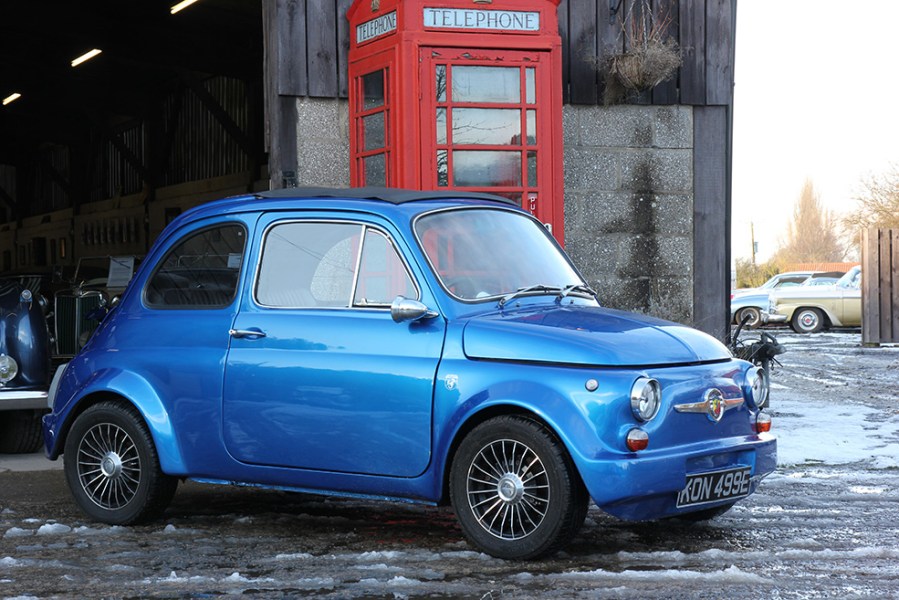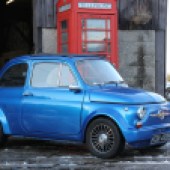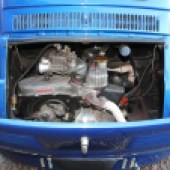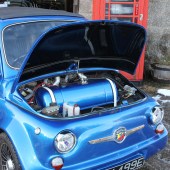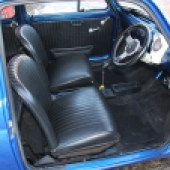Classics World’s Rob Hawkins test drives and reviews a modified 1967 Fiat 500…
If you want to own a supermini from the sixties or seventies, then there really are only two choices (unless you count bubble cars); either a Mini or a Fiat 500. Both can be found in original condition, or just like the Fiat 500 seen here, modified.
The Fiat 500 was launched in 1957, two years before the Mini, but didn’t last as long, finishing in 1975, whereas the Mini continued for another 25 years. The Fiat was the shorter of the two by one foot (9 feet for the Fiat 500 and 10 feet for the Mini), and had a range of smaller air-cooled engines, starting with a frugal 13bhp 479cc that claimed a top speed of 53mph. Larger and more powerful engines replaced it and when the model was axed in 1975, it boasted a 23bhp 594cc engine.
This was still smaller and less powerful than the 34bhp water-cooled 848cc A-series engine that was used in the first Mini, but there was a sound excuse for this. The Fiat engine only had two cylinders, whereas the Mini always had four cylinders, although the Fiat’s cylinder head is made from aluminium, and the Mini’s is made from heavier cast iron (both being an overhead valve configuration). However, it wasn’t always a question of performance, but the nostalgia of these small cars, the history and the fondness for such a classless car.
This modified 500 had initially been unused since the late eighties, until its previous owner purchased it in 2004 as a restoration project. The engine and gearbox had long gone, so the plan was to undergo a thorough strip and rebuild, which got underway in 2007 and took two years to complete at a cost of roughly £12,000.
The bodywork was revived with a new front panel, front valance, wings, doors, floor pans and a boot lid. Group N wheel arch extensions were added at all four corners to ensure coverage of a wider set of 12×4.5-inch diameter BRM-style alloy wheels (still fitted and shod with Yokohama A539 tyres). The arches were blended into the bodywork and the standard chrome bumpers were ditched in favour of GRP wrap-arounds that have also been blended in.

The bodywork was painted in Peugeot Blue Recife, and modern LED and HID lighting was added to the front and rear. Whilst the exterior modifications look impressive, what’s underneath the skin of this Fiat 500 appears to be equally interesting. For example, there are disc brakes all round, coilover suspension at the front and swinging arms at the rear with Fiat Abarth driveshaft couplings. The steering rack is from a more modern Fiat 124, but what’s particularly mouth-watering is the specification of the engine. Middle Barton Garage in Oxfordshire built a 650cc with a fast road camshaft, a skimmed alloy head to produce a 9.5:1 compression and an alloy sump pan and Abarth rocker and fan covers. Fed by a 38mm Dell’Orto carburettor via an electric fuel pump (the mechanical fuel pump is still fitted but blocked off) and with a wrapped exhaust manifold to keep the heat away from the engine, it produced an impressive 35bhp.
The interior was also updated, with a Mountney steering wheel, extra Smiths gauges for the fuel level, battery voltage and oil pressure, plus a modern-looking bank of switches. The magnetic adjustable seatbelts have been retained, along with the standard seats and even a sunroof.
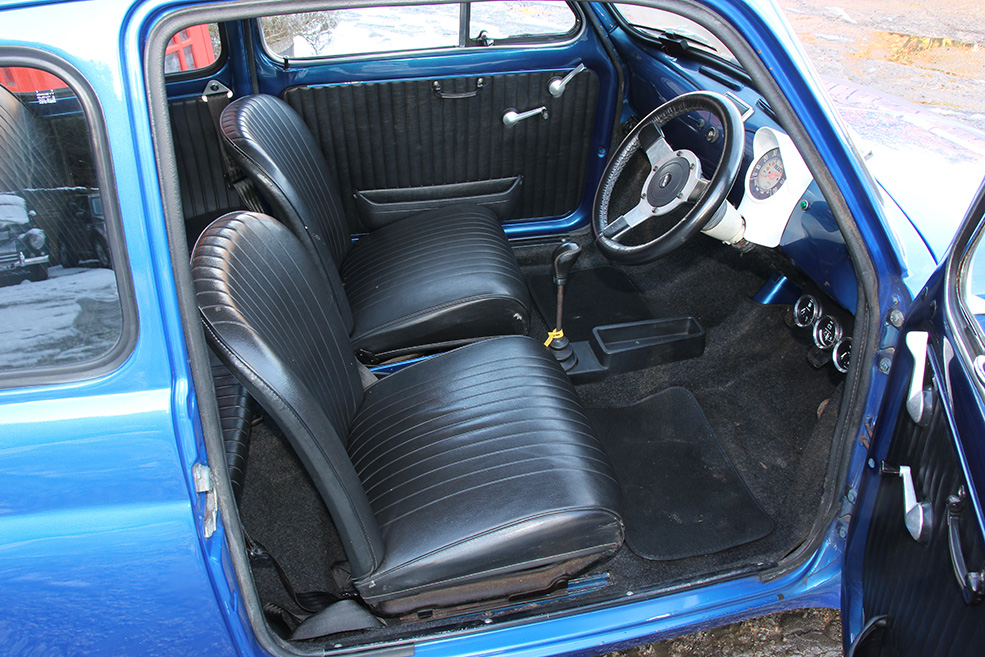
ON THE ROAD
Sitting in the driver’s seat of this Fiat 500, the typical Italian driving position is instantly noticeable with the steering wheel, seating position and pedals all being offset to each other. With the ignition key inserted in the centre of the dashboard and the ignition on, you have to pull one of the two choke cables on the floor (between the front seats) to fire the engine into life. There’s no mistaking the two-cylinder four-stroke air-cooled motor. The noise levels are sufficiently entertaining without being deafening, which is quite commendable considering there are a couple of tea-strainers for air filters on the twin-choke Dell’Orto carburettor and not much length in the exhaust system.
Setting off is at first quite a challenge. C&SC, who are selling this car, wonder whether a race clutch has been fitted, such as a paddle clutch, although there’s nothing to suggest this in the documentation. The clutch pedal only needs half an inch or so of travel before the clutch bites and the car moves abruptly. This behaviour could be typical of a race clutch, or maybe a sticking clutch cable. Whichever the answer, the clutch isn’t too difficult to get used to and is easier to operate on the move.
The 650cc engine is lively and happy to be revved. Don’t expect breakneck acceleration, but 50-60mph along country lanes feels sufficiently fast and will keep you entertained. The rear engine layout and lightweight front end provides different handling characteristics to most front-engine vehicles. The wheel alignment may need to be checked or the coilovers adjusted (if they can), but undulations in the road combined with mild cornering often felt a little unpredictable through the steering. It wasn’t terrifying, just noticeable that something wasn’t reacting the way it should.
VERDICT
There isn’t much to choose from if you like modified superminis from the sixties and seventies. The Mini dominates this market, so should you want something different, then a Fiat 500 is the answer. With a price tag of £9,995 for a RHD version, it’s sensibly priced when compared to most OE-spec models, or a highly sought after early model with suicide doors.

Tech Spec
ENGINE: 650cc
POWER: 35bhp
GEARBOX: 4-sp manual
BRAKES: Discs all round

